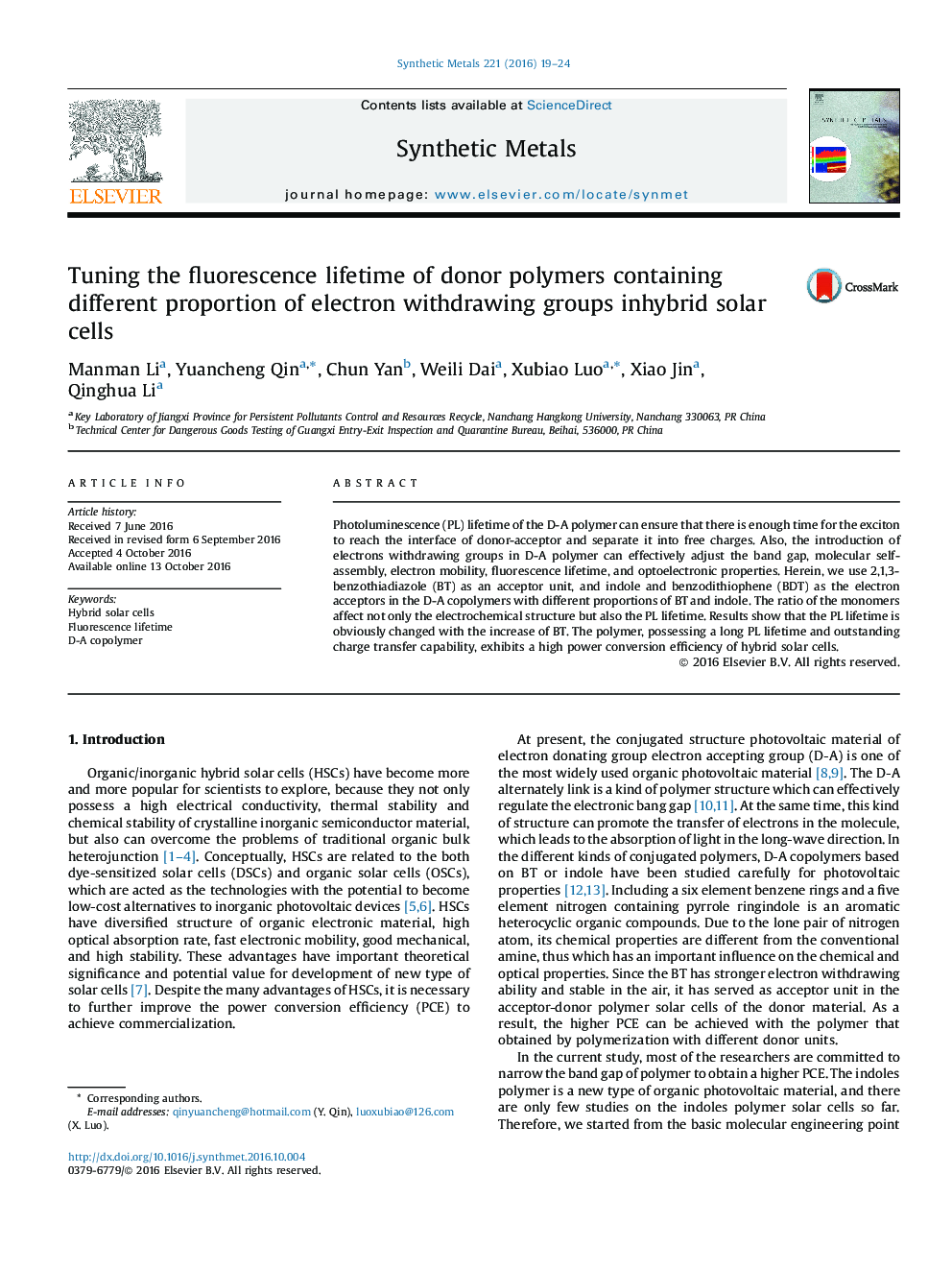| Article ID | Journal | Published Year | Pages | File Type |
|---|---|---|---|---|
| 5435562 | Synthetic Metals | 2016 | 6 Pages |
â¢Different proportion of the polymer has an influence on the photoluminescence lifetime.â¢The longest of the exciton lifetime can achieve 5194 ps.â¢Power conversion efficiency can reach 2.84%.
Photoluminescence (PL) lifetime of the D-A polymer can ensure that there is enough time for the exciton to reach the interface of donor-acceptor and separate it into free charges. Also, the introduction of electrons withdrawing groups in D-A polymer can effectively adjust the band gap, molecular self-assembly, electron mobility, fluorescence lifetime, and optoelectronic properties. Herein, we use 2,1,3-benzothiadiazole (BT) as an acceptor unit, and indole and benzodithiophene (BDT) as the electron acceptors in the D-A copolymers with different proportions of BT and indole. The ratio of the monomers affect not only the electrochemical structure but also the PL lifetime. Results show that the PL lifetime is obviously changed with the increase of BT. The polymer, possessing a long PL lifetime and outstanding charge transfer capability, exhibits a high power conversion efficiency of hybrid solar cells.
Graphical abstractWith the electron withdrawing groups BT content increased in polymer, the transient fluorescence lifetime is obviously growth. The longest of the exciton lifetime can achieve 5194Â ps. And its PCE can reach 2.84%.Download high-res image (174KB)Download full-size image
